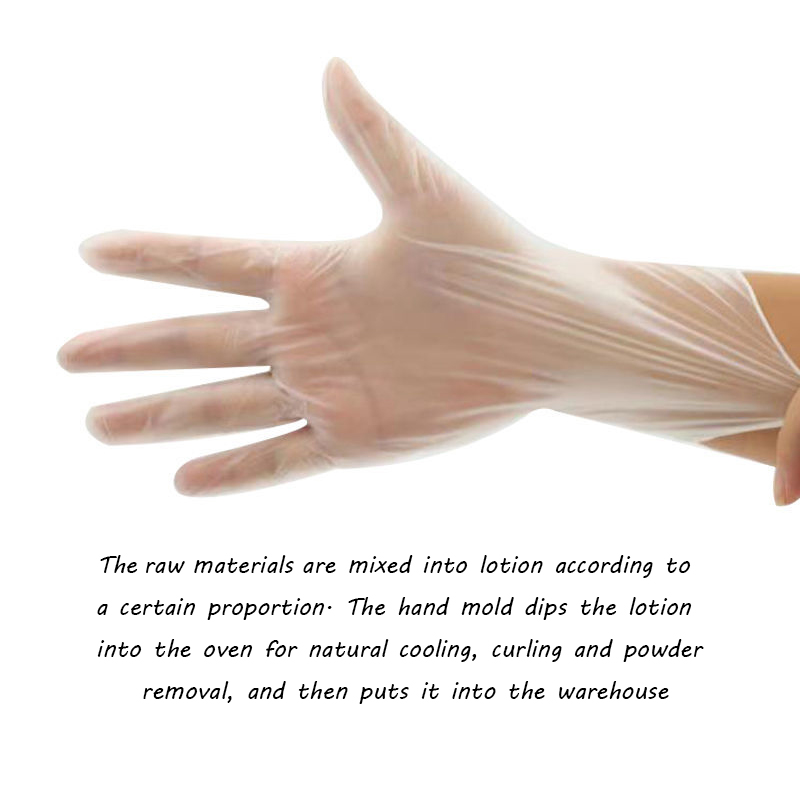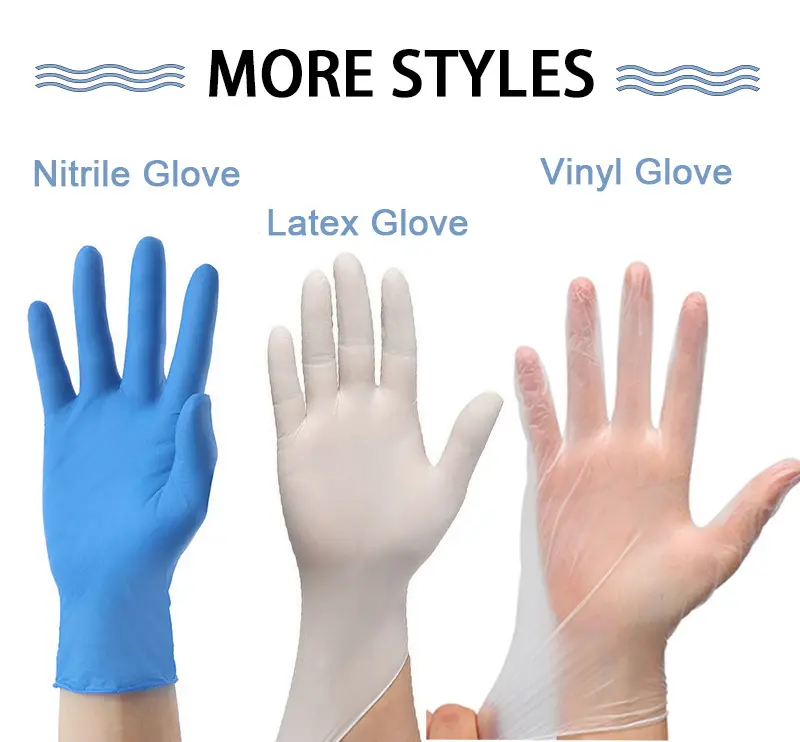PVC gloves are also known as disposable vinyl gloves, due to the particularities of PVC gloves material, their application is different from nitrile gloves or latex gloves. Because the raw material supply of PVC gloves does not depend on natural latex, the price of PVC gloves is also lower than that of latex and nitrile gloves. It will not cause any skin allergies,and provide barrier protection for allergic skin people, which is the biggest advantage of it different from latex gloves.

PVC Glove Manufacturing Process
After the PVC glove raw materials are proportioned, the PVC glove production line begins to enter, and the entire production process is basically similar to the manufacturing process of latex and nitrile gloves.
The PVC hand model is cleaned and dried by the glove former cleaning system, which is to remove the stain left on the hand model before, and then the PVC hand model is dried with a mixture of calcium nitrate and calcium carbonate.
The next process is dipping the hand mold into the raw material of PVC gloves, the speed of the PVC glove production line determines the thickness of the PVC glove, and then the glove former is dried in the oven , so that the PVC glove is formed for the first time.
The next important process of PVC glove production line is glove stripping, Fengwang automatic glove stripping machine can smoothly take off the glove on the hand mold, solving the problem of traditional manual stripping time and effort.

Water Tight Test System of PVC Gloves
PVC gloves can be divided into medical PVC gloves and industrial PVC gloves according to different application fields. This test standard is measured by acceptable Quality Restriction (AQL). That is, the AQL percentage represents the number of gloves that must pass the test in the same batch of gloves manufactured. For example, medical PVC gloves require an AQL percentage of 1.5%, which means that the unqualified rate of each batch of glove manufacturing is only 1.5% or less.
The instrument used for the AQL test of PVC gloves is the glove watertight test system provided by Fengwang. When the glove test begins, the PVC glove needs to be fixed on the instrument, at which time the inside of the glove is filled with water and hung upside down for 2 minutes, which is to test whether the glove has leaks for further statistics.

Nitrile, Latex, PVC Glove Difference
Nitrile gloves: Nitrile gloves are made of synthetic rubber. Due to the unique properties of the raw material, nitrile gloves have the following characteristics: high tactile sensitivity, puncture resistance, oil, fuel and other chemicals resistance.
The appearance of nitrile gloves avoids the skin allergy problem of latex gloves, and the high puncture strength is also one of the points of nitrile gloves. However, nitrile gloves have poor flexibility. The main application fields of nitrile gloves are: food, cleaning industry, laboratories, laboratories, medical institutions, automobiles, beauty salons, tattoo shops and other industries.

Latex gloves are made of natural rubber, which also determines that some people are allergic to latex gloves. Because latex gloves have high tactile sensitivity, comfort and fit, they are more favored by the pharmaceutical industry and health industry. Latex gloves are widely used and are used in almost all walks of life. It can be used in the medical, and dental industries, food service and food processing, cleaning and hygiene, automotive and manufacturing industries, but also often used in light house cleaning, painting, complex parts processing, scientific research institutions, laboratory analysis, technical work, etc.
PVC gloves are mainly made of PVC material, PVC gloves have no allergens, no dust generation, and low ion content, with strong acid resistance, oil resistance and other characteristics, while having good anti-static performance, and can be used in a dust-free environment, so PVC gloves are mostly used in the production environment of semiconductors, LCD screens, electronic products and digital products.


